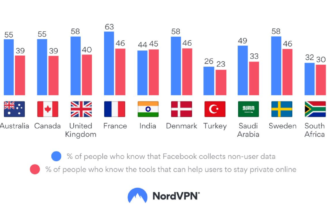The healthcare industry has been one of the greatest beneficiaries of digital transformation in the last 12 months.
Essential remote care services, critical real-time hyper-localised data in tracking pandemic trends, and the rapid rollout of a worldwide vaccine have been facilitated by digitalization.
This growing reliance on digital operations brings with it vast amounts of data – according to IDC in May 2020, more than 59 zettabytes (ZB) of data would be created, captured, copied, and consumed in the world last year alone.
This sudden and exponential increased digital demand has meant that the essential data infrastructure that healthcare relies on has come under enormous pressure and must handle critical data and workloads.
At the same time, improvements in technology, coupled with the convergence of cutting-edge research and data analytics have created a new opportunity in healthcare. Today’s clinical workloads require storage infrastructure advancements that meet their demands and deliver fast, high-quality patient outcomes.
With requests from local hospitals, state governments and global groups such as the World Health Organisation (WHO) clamouring for models of data and forecasts, capturing and analysing such large data sets requires a storage infrastructure that is reliable and scalable at every level.
Future-proofing infrastructure to make the most of the use of technology such as Artificial Intelligence (AI) will also be a key priority. But what are the challenges facing healthcare with data storage and how can organisations solve them?
Storage at the Edge and in the Core
There is no ‘one solution fits all’ to solving data storage challenges in any industry, and in healthcare, this is certainly no different.
The events of the last 12 months and in fact over recent years of digital transformation show there is a burgeoning need for hybrid storage systems to be implemented throughout the industry.
At a local, core level, organisations must have the correct hardware to store and monitor the increasing amounts of patient data. For example, the rise of smart video systems for remote patient monitoring has increased the proliferation of video data that is needed to be managed and stored to care for patients in a safe manner.
At a wider regional level, the amount of data being produced is no longer viable to be kept on-site at every healthcare premise. The use of edge data centres will be key to ensuring secure and reliable storage of data while being easily accessible to an industry where emergency access is a necessity.
The combination of the edge and private and public cloud environments will continue to be of use to the healthcare industry, as trends and analysis continue to take place at a national and even international level.
What cloud storage offers is both the ability to scale quickly as data grows, as well as enabling remote collaboration on data sources across organisations and at different locations.
Utilising a hybrid model of cloud and edge storage, along with a robust core data infrastructure, means healthcare and research organisations can invest in solutions that offer the ability to index, preserve, and provide access to large files and vast amounts of data with flexibility and ease.
The Importance of Scalability and Real-Time Visibility
The proliferation of healthcare data is only set to increase as more technology is brought into the industry and the demand for digital services increases. Achieving a dynamically scalable storage architecture to cope with the waves of data will not only provide flexibility in the present but future proof the infrastructure for years to come.
Ensuring the real-time visibility of data has been imperative to organisations in the industry. The COVID-19 pandemic resulted in immediate demand for large-scale data modelling and visualisation to be able to track spikes in cases.
This dramatic increase in data being written and read requires a scalable file storage system to store large data sets, while simultaneously requiring performance for analysis and visualisation.
Legacy systems and software may be reliable and user friendly in the short term, but with the vast scale of the data testing their limits, organisations will want to ensure that the total cost of ownership (TCO) remains low, that they can scale cost-effectively and achieve the best performance density.
Effective Data Storage Empowers Digital Transformation
As healthcare digital transformation projects continue to roll out at speed, it is of paramount importance that data is collected and stored with security, scalability and reliability in mind.
In addition, the ability to correlate data with advanced technology such as AI and advanced treatment information and research can help deliver precise diagnoses, evaluations, and medicine to patients while possibly identifying future risk factors and diseases.
Whatever the focus of the healthcare organisation in question, data storage is the essential foundation for digital transformation and should be considered carefully, upfront, to ensure the best TCO for its intended use case and application.
By Davide Villa, Business Development Director for EMEAI at Western Digital.
Edited by Luis Monzon
Follow Luis Monzon on Twitter
Follow IT News Africa on Twitter








